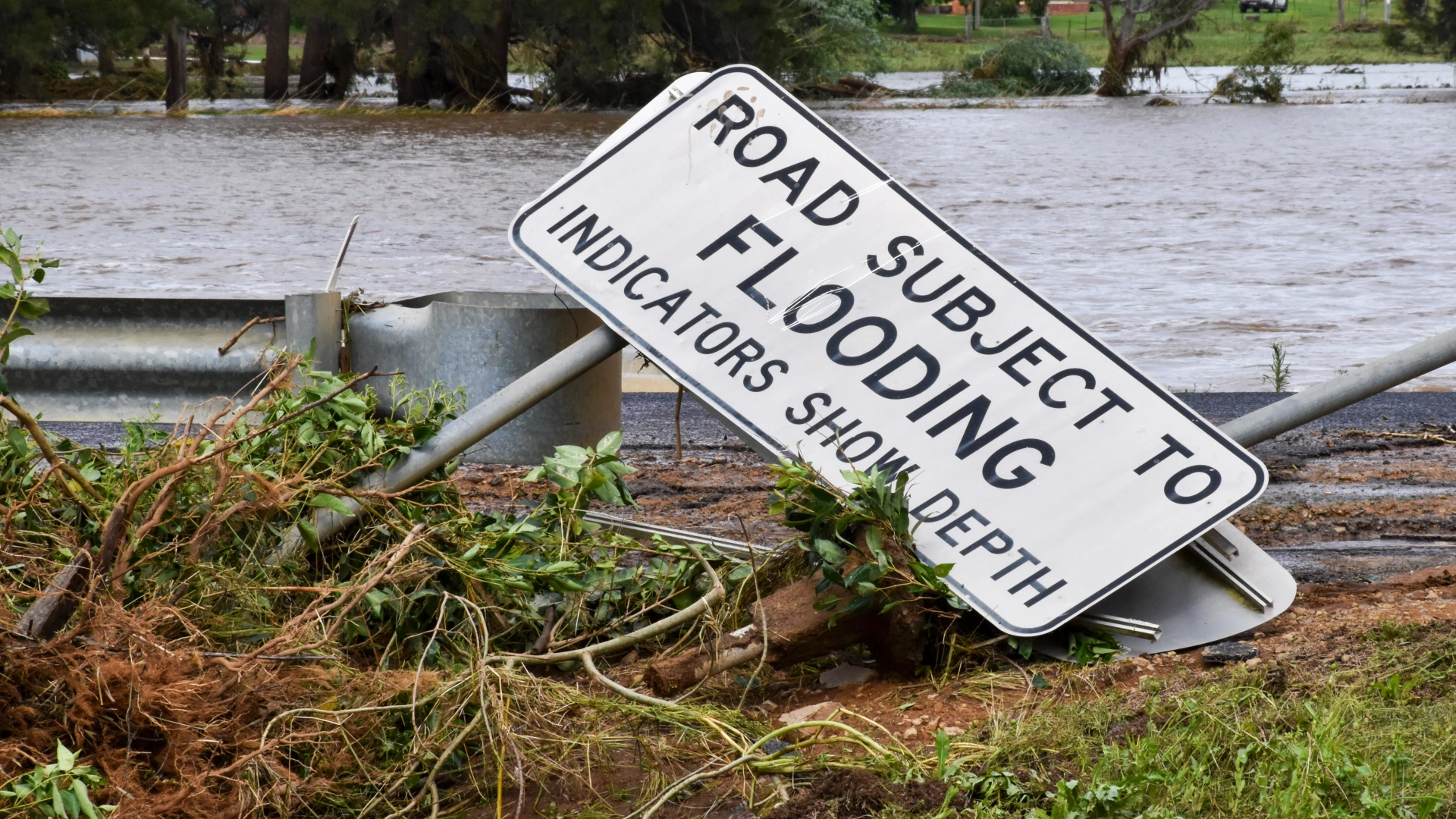
Introduction
In March 2021 , New South Wales was in the midst of its fifth ‘once in a century’ flooding event and Australian coastlines continued to experience abnormally heavy rainfall, strong winds and high tides. As climate change causes seas to rise and fuels abnormal storms, droughts and floods, people and communities will continue to lose access to their homes, resources, natural spaces, and cultural heritage. Research predicts that sea levels could climb by as much as six feet or more by century’s end, impacting people, development, infrastructure and coastal ecosystems and inundating hundreds of coastal cities. The number of people who will be forced to move is estimated to reach more than 300 million globally by 2050 – and this number is from sea level rise alone.
In terms of meeting the historically unprecedented challenge of moving millions of people and infrastructure, researchers describe the current ad hoc pattern of relocation – also known as ‘forced retreat’, which typically involves just a few homes at a time and invariably during or after the disaster – as woefully inadequate. One solution that is increasingly becoming part of the conversation is the idea of ‘managed retreat’, or the voluntary movement and transition of people and ecosystems away from vulnerable coastal areas. The aim of managed retreat is to proactively move communities and infrastructure before disasters occur to avoid damage, maximize benefits, and minimize costs for communities and ecosystems.
Why is managed retreat so difficult?
While all indications are that we should expect to undertake mass relocation of many coastal communities, managed retreat in Australia has proven to be not only complex in legal, financial, cultural, and logistical terms, but an option which also carries significant political baggage, hindering governments’ abilities to respond. For example, the Noosa Shire Council developed a ‘Coastal Hazards Adaption Plan’ in 2018, proposing new coastal building lines and restricting new development areas based on their level of exposure to rising waters and coastal erosion. This proposal caused local uproar with one high profile resident going so far to say that it was ‘disappointing and illogical’. As of late 2021, the Council was still accepting submissions and had yet to implement any formal measures from the plan.
Convincing people to uproot their homes, businesses and communities is just one of the many difficult problems policy makers must solve when conducting managed retreats. However, if governments cannot design effective retreat policy, individuals will be left to figure things out on their own, with devastating consequences. In January 2011, an inland tsunami caused by an abnormally strong La Niña event hit the Lockyer Valley town of Grantham, in Queensland, killing twelve people and destroying more than fifty homes. While the government assisted in relocating over a hundred households in this instance, evacuations and forced retreats are incredibly costly and will invariably result in more deaths, injuries, environmental degradation, and property damage. In contrast, managed retreats allow for a co-ordinated process of voluntarily and equitably relocating people, structures, and infrastructure as well as the transition of individual people, communities, and ecosystems (both species and habitats) inland. But apart from political will to undertake this course of action, a number of sociological factors must also be present, such as community agreement on the need to relocate and the perception of the risks of remaining as immediate and severe.
Executing a successful managed retreat is both expensive and complex, but careful planning from policy makers now will undoubtedly save both lives and taxpayer dollars in the future. The Productivity Commission’s 2021 inquiry into natural disaster mitigation found that governments over-invest in post-disaster reconstruction and under-invest in mitigation that would limit the impact of natural disasters in the first place. Academic research now sees managed retreat as integral to an effective climate response strategy. Knowing this and choosing to leave entire communities with the responsibility to organize and protect themselves from known projections of sea-level rise is, in my opinion, a borderline negligent act for any democratic government.
What are preventative measures that we can implement now?
There are a range of measures that can be implemented now to help communities prepare for sea-level rise and climate change more generally. As noted in the Productivity Commission inquiry, insurance companies can and must do more to inform households about their policies, the hazards they face as a result of climate change, and the indicative costs of rebuilding. There is a huge disparity in insurance premiums between high and low risk areas. Insurance premiums in Northern Queensland are already more than double those in Brisbane due to climate risk. Exorbitant costs of insurance may result in consumers being unable to afford cover. Furthermore, insurers have access to crucial information about the risk and costs associated with climate change. If insurers had a duty to inform households of future risks and the potential costs of what’s not covered, consumers could help mitigate the risks themselves.
In 2018, the Insurance Council of Australia released a report regarding coastal hazards and sea level rise and identifying key issues and associated recommendations that would improve Australia’s resilience against coastal hazards in the context of rising sea levels. Among their key takeaways, the report identified that
- significant additional investment will be required to mitigate the risks of coastal inundation and sea level rise
- urgent action is needed at all levels of government, in collaboration with industry, to build a national picture of coastal hazard risks and how to address it and
- the insurance industry stands ready to collaborate with government to share risk intelligence to help mitigate these growing challenges.
Additionally, and despite the array of risks which now come as a result of climate change, there are no legal requirements for councils, sellers or agents to disclose these to a prospective buyer. An analysis from the Reserve Bank of Australia (RBA) found that 3.5 per cent of dwellings in Australia have a value at risk rating that exceeds 1 per cent, classifying them as a “high risk” property in terms insurance, repairs, and maintenance – this is expected to increase to 8 per cent of dwellings nationwide over the next eighty years. In the same vein, a 2019 report by the Climate Council found that climate change risks could wipe 9 per cent off the total value of residential property in Australia by 2030. If temperatures continue to rise at the current rate, the report added, as many as one in nineteen properties could be unaffordable to insure by the end of the next decade.
Information on properties and climate risks can be found using resources including those provided by the CSIRO, CoastAdapt and Coastal Risk Australia and some local councils also provide information. However, a centralized and freely available source of climate risk data would be help consumers, governments and insurers make informed choices and plan for the future. The Productivity Commission inquiry also noted that there are opportunities to improve information consistency, sharing and communication of climate change hazards and risk exposure. Moreover, if there were consumer protection laws implemented to ensure that buyers had to view this information before settlement, this would undoubtedly help Australians make informed choices about the climate change risks they may be exposing themselves to.
Conclusion
While it would be wrong to view managed retreats as a cure-all for rising sea level and climate change risks, they must be part of the solution. Leaving the hard decisions for future decision-makers will result in catastrophe – and decisions made now demand courage and leadership as they will determine impacts for our children and grandchildren.
And there are powerful international precedents for managed retreat to occur: the Isle de Jean Charles in Louisiana is the first US community to undergo a federally sanctioned managed retreat due to loss of coastal land to rising seas and storm surges. Ultimately, governments and communities should come to see retreat from climate change’s impacts as not just a problem to be navigated, but a chance to build a better and safer future for everyone.
References
Australian Associated Press, ‘NSW flooding: extreme rain wreaks havoc in NSW in once- in-a-century event’ The Guardian (Online, 22 March 2021) <https://www.theguardian.com/australia-news/2021/mar/21/nsw-flooding-people-flee-their-homes-overnight-as-extreme-rain-wreaks-havoc>.
Scott A. Kulp and Benjamin H. Strauss, ‘New elevation data triple estimates of global vulnerability to sea-level rise and coastal flooding’ (2019) 10(4844) Nature Communications. <https://www.nature.com/articles/s41467-019-12808-z>.
John Carey, ‘Core Concept: Managed retreat increasingly seen as necessary in response to climate change’s fury’ (2020) 117(24) PNAS <https://www.ncbi.nlm.nih.gov/pmc/articles/PMC7306784/>.
Katie Spidalieri and Annie Bennett, ‘Managed Retreat Toolkit’ Georgetown Climate Toolkit (Web Page) <https://www.georgetownclimate.org/adaptation/toolkits/managed-retreat-toolkit/introduction.html>.
Matthew Cranston, ‘Wilson fights Noosa council’s climate change hit to property’ Australian Financial Review (online, 23 April 2016) <https://www.afr.com/policy/economy/wilson-fights-noosa-council-s-climate-change-hit-to-property-20210423-p57lq9>.
Elly Bradfield, ‘Grantham floods five years on, residents speak about that fateful day and their lives now’ SBS News (online, 8 Jan 2021) <https://www.abc.net.au/news/2016-01-08/grantham-floods-five-years-on-residents-speak/7074082>
Tony Matthews and Ruth Potts, ‘Planning for climigration: a framework for effective action’ (2018) 148:1 SpringerLink <https://www.researchgate.net/publication/324824689_Planning_for_climigration_a_framework_for_effective_action>.
Productivity Commission, ‘Barriers to Effective Climate Change Adaptation’ (Report No. 59, Final Inquiry Report, 19 Sep 2021) <https://www.pc.gov.au/inquiries/completed/climate-change-adaptation/report/climate-change-adaptation.pdf>.
Tony Matthews, ‘Climigration: when communities must move because of climate change’ The Conversation (online, 16 Sep 2019) <https://www.abc.net.au/news/2016-01-08/grantham-floods-five-years-on-residents-speak/7074082>.
Insurance Council of Australia, ‘Actions of the Sea Vulnerability Study’ (Report, Oct 2018) <https://insurancecouncil.com.au/resource/actions-of-the-sea-vulnerability-study/>.
Patrick Wright, ‘The climate change risks to think about before you buy property’ ABC News (online) <https://www.abc.net.au/everyday/climate-risks-to-think-about-before-you-buy-property/11617296>.
Climate Council, ‘COMPOUND COSTS: HOW CLIMATE CHANGE IS DAMAGING AUSTRALIA’S
ECONOMY’ (Report, 14 May 2019) <https://www.climatecouncil.org.au/resources/compound-costs-how-climate-change-damages-australias-economy/>.






